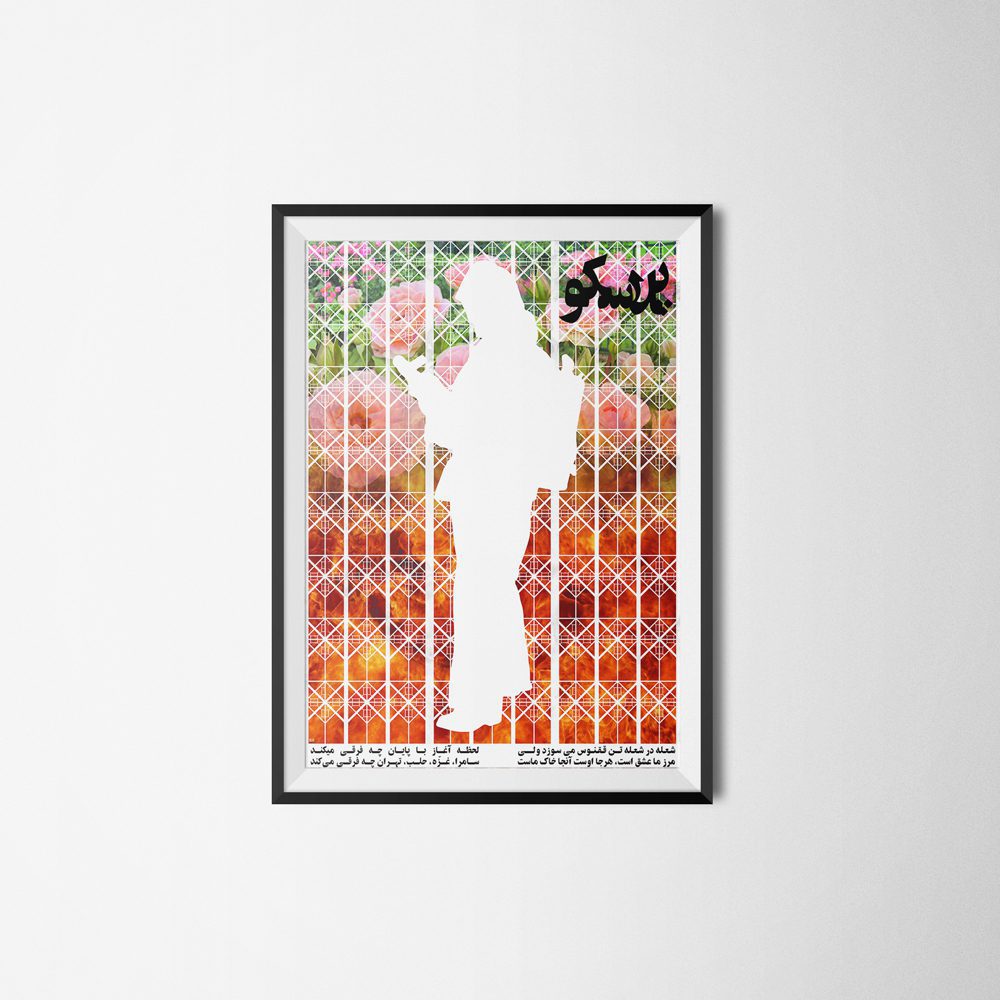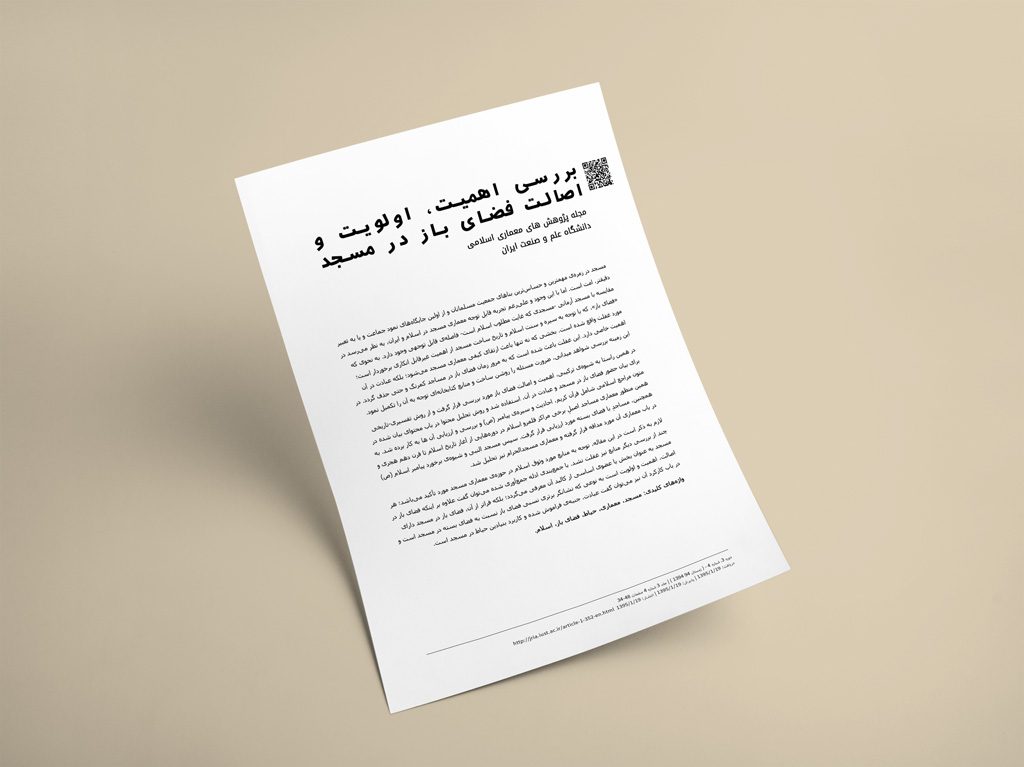regarding lack of resources about mosque architecture, we want to empowering this field. This paper had published in the Journal of Researches in Islamic Architecture, Iran University of Science & Technology.
Abstract:
Mosque is one of the most important Muslims’ buildings and one of the best expressions of Islamic community (Ummah). In spite of considerable architectural history of the mosque in Islam and Iran, it seems that there are significant questions about the ideal mosque in Islam. For example “open space” (or courtyard), regarding its undeniable importance according to Islamic tradition (Sirrah & Sunnah) and architectural history of the mosque, has being weakened. The open space in mosque which not only improves the quality of architecture but also worshiping within has a special significance. Neglecting this importance has led to gradually reducing or even eliminating the open space in the mosques. In this regard, a combined style was choose to examine the originality of open space, using historical interpretation and content analysis methods about the main references of Islam (the Quran, Hadith and life of Prophet (PBUH)). Therefore, the original mosques of centers of Islamic territory from the beginning of Islam to the sixteenth century and also mosques without open space were reviewed. Then Masjid an-Nabawi considering the approach of the Prophet (PBUH) about its architecture and Masjid al-haram were added to the analysis.
Despite of common categorizing of mosques based on closed spaces, the masjid An-Nabawi which had been built by supervising of the last Prophet (PBUH) hadn’t any closed space. Considering the hard climatic requirements, available roof construction technics and user requests (based on historical texts), prophet’s decision to not making a hard roof is a major reason of priority of open space in mosque. Masjid al-haram as an ancient religious Islamic site and one of the most symbolic aspects of Islam has always been in open space and even hadn’t had roof itself during thousands years.
There are also many prayers and Islamic rites which should be – or is better to – done under sky, especially not personal ones like Hajj, Fitr Salah, Qorban Salah. This could be remarked as a presentation of public aspect of worship in Islam in contrary of the isolation in some other religions (e.g. Christianity, Judaism and Buddhism). It is more impressive by attention to mosque’s major function: daily congregational prayer (Salaat Al-Jamaah). Also there is some Islamic advises about not making roofed mosque. The important point about these sentences is removing any obligation about building mosques with or without roof which could cause many difficulties. But it doesn’t mean there is a neutral viewpoint. Advises is showing the priority of open space to closed spaces.
Regarding the pattern of masjid An-Nabawi, open space is always noticeable part of architectural history of mosque, especially in major mosques of main centers of Islamic territory during more than fourteen hundreds years. It could be more significant by attention to their various climatic, cultural, architectural, historical, technical differences in a vast geography and long time period. It could be led us to re-categorize mosques not only based on closed space but also caring open space changes. There are also many evidences showing mosque yards as a place for saying prayer and worship.
The most opposite point of the importance of open space in mosques are some mosques without open space. These mosques which are totally closed space might be referenced as contravention to open space based mosques. In analyzing these samples two points must be considered: first is the flexibility of Islamic sentences especially in form design and Islamic accommodation with local properties. Second is capacity of these mosques to be referenced via masjid An-Nabawi. However by studding about these samples we could categorizing them in three: first are very little mosques which usually are consist of one or two rooms and direct access from outdoor in which preparing open space isn’t possible. These are neighborhood chapels that could be developing into mosques in future. Second are large mosques that are transformed from churches or other religion’s temples e.g. Hagia Sophia & Al-Aghsa. These types usually conserve their structural and architectural specifications but there are examples which open space had been attached to them e.g. Yazd-Khast and Jame-Neireez. Third are special ones which had been built for specific purposes or particular condition such as Sheikh-Lotf-Allah mosque. These ones couldn’t be referenced as major movement in mosque design.
By analyzing these evidences, it is obvious that open space shouldn’t be neglected or reduced to a division junction and light-supplying space. It is a heritage and beyond; one of the major parts of mosque. Imagining the closed space as main space of worships in mosque can cause many problems such as costly construction, time-consuming build programs, circulation and space access difficulties, ventilation and light-gaining challenges and isolation effects on users.
As result, the collected evidences show not only open space in the mosque is a section or basic part of mosque, but also open space has originality in the mosque design and the worship within is a forgotten aspect of this fundamental part.




